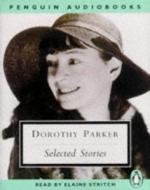|
This section contains 269 words (approx. 1 page at 400 words per page) |

|
Big Blonde Summary & Study Guide Description
Big Blonde Summary & Study Guide includes comprehensive information and analysis to help you understand the book. This study guide contains the following sections:
This detailed literature summary also contains Bibliography on Big Blonde by Dorothy Parker.
Author, critic, and celebrated wit Dorothy Parker first published "Big Blonde" in a popular magazine in 1929, at the end of the decade with which she is closely associated. The story presents a sad and biting view of a woman's life in the 1920s, an era often considered both fun and liberating for women. "Big Blonde" received a warm critical and popular reception and was honored as the best short story of the year in the prestigious O. Henry competition for 1929. A year later it appeared in a collection of stories by Parker entitled Laments for the Living, and has since been reprinted in many anthologies and readers. "Big Blonde" is considered Parker's most significant literary accomplishment and also her most autobiographical piece of writing. For this reason, it has continued to command the fascination and respect of readers. The story is admired for its unconventional narrative structure and its controlled tone.
In Mrs. Morse, the passive, aging "big blonde" to whom the title refers, Parker offers readers a protagonist who is both tragic and pathetic. There are several interesting links between the events in the story and those of Parker's life. Both Parker and her fictional counterpart had brief, disillusioning marriages and a string of unsatisfying love affairs, and both attempted suicide. Parker does not depict Mrs. Morse sentimentally or even completely sympathetically, however; rather, she uses her character to make a cutting critique of gender dynamics and the subtle psychological forms that oppression can take in a supposedly modern and liberated environment. Mrs. Morse's lack of insight and general ineffectuality may also reflect Parker's famous self-deprecation.
Read more from the Study Guide
|
This section contains 269 words (approx. 1 page at 400 words per page) |

|



